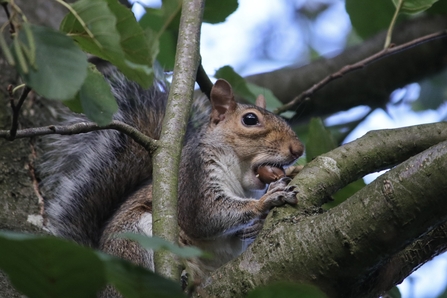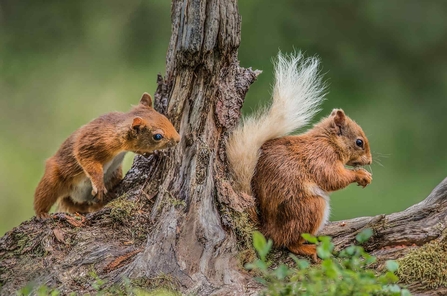Until the 1800s it was the red squirrel (Sciurus vulgaris) that would have been commonly seen scurrying around the UK countryside, identified through its distinctive orange-red fur and tufty ears with a large bushy tail that almost matched the size of its body.
The red squirrel feeds on nuts and seeds and is thought to favour pine nuts, however the species has also been seen to feast on fruit, tree shoots, and even fungi.
Once, reds were such a common sight in our countryside that the species inspired "The Tale of Squirrel Nutkin", a book written and illustrated by renowned children’s author Beatrix Potter, in which a plucky red squirrel named Nutkin escapes a near-fatal encounter with an owl called ‘Old Brown,’ losing his bushy red tail.
However, the reds began to disappear from our landscape in the late 1800s when the grey squirrel was introduced from North America. The non-native grey (Sciurus carolinensis) outsized the reds and out-competed them for both food and habitat, but perhaps more significant was the ‘squirrel-pox’ carried by the grey, from which they were immune but proved deadly for the reds.
Coupled with habitat loss, the number of red squirrels fell dramatically and today, according to the Red Squirrel Survival Trust, there are thought to be around 287,000 of the native red species in the UK compared to around 2.7m of their larger, North American cousins.

